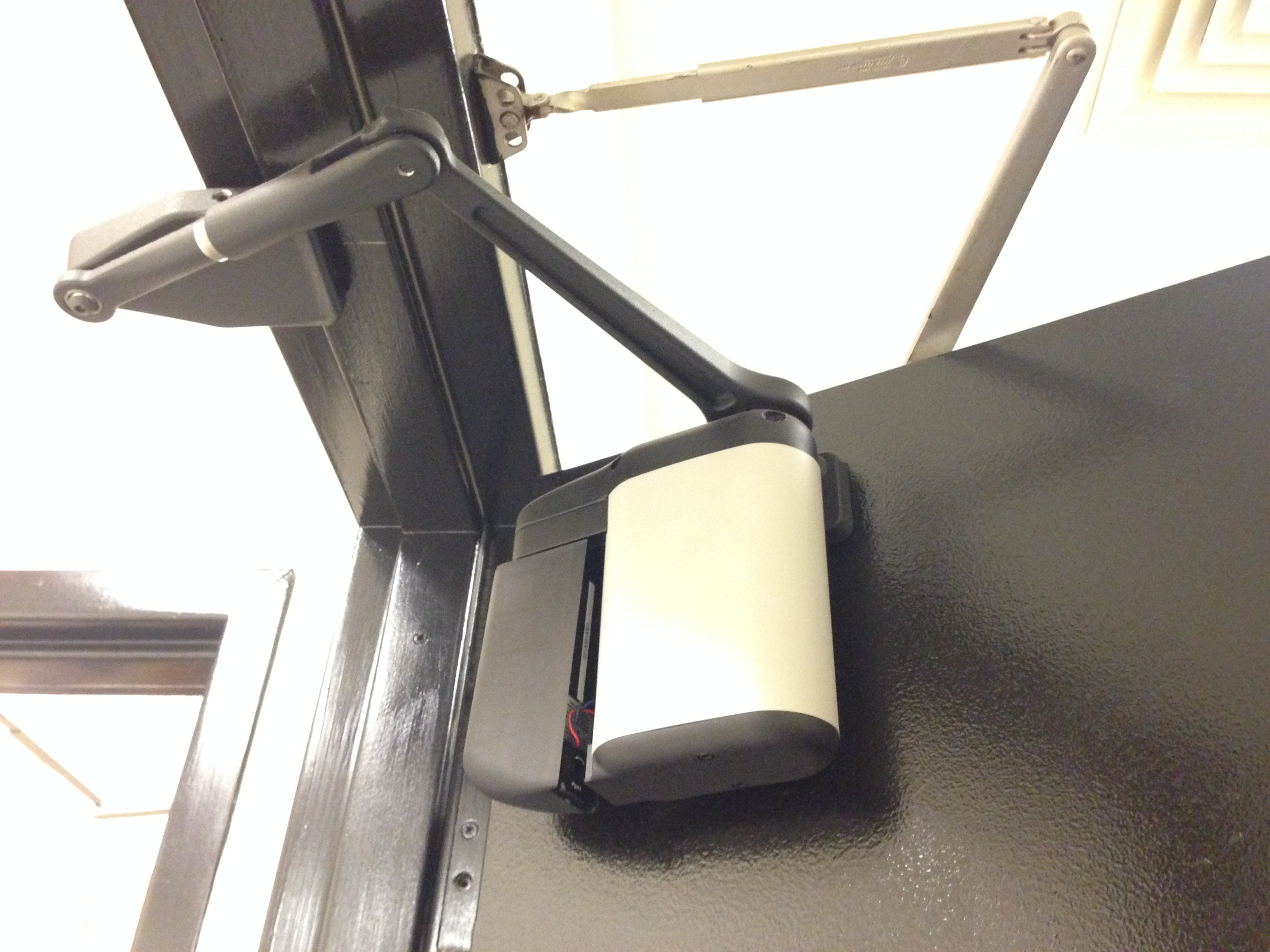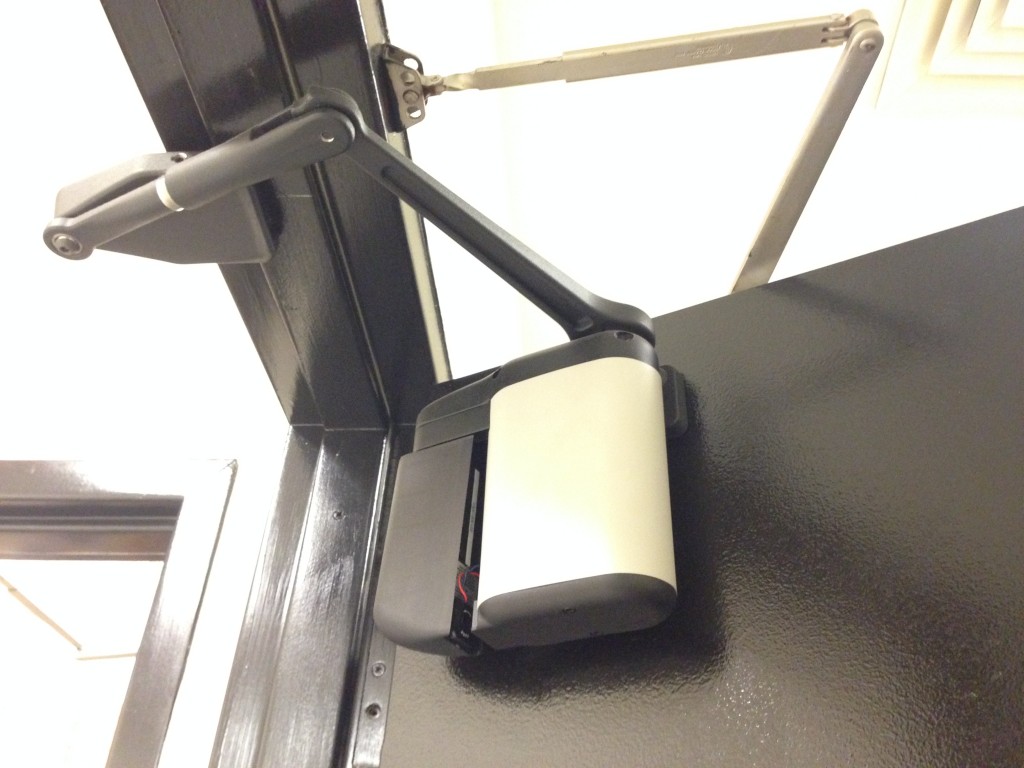Sort of like the chicken and the egg, this Fixed-it Friday photo from Steve Turner and Ray Valentine of Precision Doors & Hardware made me wonder…was the closer added because the automatic operator wasn’t closing the door properly, or was the automatic operator added because the closer required too much opening force? Or one or the other stopped working completely but was not removed?
What do you think happened here?
You need to login or register to bookmark/favorite this content.







Closer added does not match door finish like the automatic does
Abandoning non-functional products in place is a plague in building management. I’m going with that.
Now there’s a door that’s “up in arms”…
heheh perfect closer joke!!
The hinge is missing a screw. If it’s a fire door, it won’t pass inspection.
Not passing inspection because of a missing hinge screw seems to make sense but I’ve seen much worse. I recently provided doors/hardware on a facility that passed inspection in December and is now occupied. At least one of the fire doors in that building HAD a gap under the door that was nearly 2-1/2″. Evidently, the frame was raised off the ground in anticipation of another concrete pour that never happened. The frame was grouted solid and the area under the frame was formed and grouted as if the bottom 2″ of frame material had been removed. It was essentially a double-rabbet concrete frame below the HM frame.
I was asked to provide a new door that was 2″ longer to match the existing frame’s hardware locations. At one point I thought it probably wasn’t a big deal to provide a longer door because it wouldn’t be much different than a frame with hospital stops. However, I couldn’t find anything specific and it turns out that the hardware had to be changed to include access control so we replaced the entire opening.
I would love to know how a door with a 2-1/2″ gap underneath it was able to pass the fire inspection.
In my experience, many fire inspectors do not focus on door-related issues. 🙁
– Lori
Well that’s easy to figure..one opens the door, the other closes it!
Battery operated opener with dead battery, and no one can identify manufacturer
Are we even sure that the device on the push side even has any closing functions? It looks like it’s a battery powered opener. Doesn’t look big enough to also have closer functions.
Found it. If I’m reading it correctly it will only be a “powered closer” if you have the correct kit installed. http://www.disabilitysystems.com/handicap-door-openers/ada-ez.html
If the “powered closer” feature wasn’t operational, wouldn’t it still have spring power to close the door? Or is it only an opener? I’m not very familiar with this product, but it seems like there would be too many variables to have it work with every closer.
– Lori
Easy answer – – it’s another Bill Elliott spec!
He’s going to get mad at you. 😉
– Lori
Solution sent to maintenance department from Engineering Department following up on a verbal order from the Architect acting on a complaint from the AHJ.Obviously!
The opener is the ADA-EZ Pro and the installer did not program the opener properly. It appears the battery is disconnected therefore making the ADA-EZ inoperable and uses the manual setting to close the door.
The ADA-EZ is a cool product. It uses kinetic energy to power the battery in the closing mode. You need an 80/20 ratio to power this unit. 80 people pass through,/ and 20 people use it as an opener. It also has a power assist mode too!
Thanks Chuck!
– Lori
I like Jutzi’s answer the best! It seems fitting. That’s how they install hardware in NH.
In reply to the comment by Mr. Morris, sell up. The more product that you can put on a door the more money you can make.
The unit shown on the door is an ADAEZ x PUSH x ALUM manufactured by EDMIT Industries. See http://www.adaez.com. The power pack interlocks to the bottom cover secured to the operator body by two hex screws. The power pack ships from the factory disconnected from the unit. The final steps in the installation are to remove bottom cover, apply power, auto-tune, safety check, apply ANSI signage and close out.
Not sure if this unit was ever programmed. The closer is adding no value to this install. The ADAEZ operates in both automatic and manual modes. When used manually the unit functions like an ordinary hydraulic door closer. Opening and closing forces are fully adjustable. A Dynamic Braking / Back check Braking module protects the door, frame, and operator from damage due to high winds or abuse. All units have a field adjustable spring to make ADAEZ a Size 2 to a Size 6 closer. The power pack is not required to close the door – a mechanical spring does that – but a power close feature is field selectable.
Don’t let the small size fool you. The ADAEZ has been designed for institutional commercial applications, its brushless DC motor and gearbox set have been tested to 10M manual cycles / 1M automatic cycles. Look at the size of the door arm in the picture for confirmation – unboxed the unit weighs in at 15 lbs. A dynamic braking module and electronic back check brake make the unit ideal for exterior doors in high wind applications – the motor acts like a brake to keep the door from opening too fast.
Under automatic operation the ADAEZ controls the opening speed, opening force, hold open time, closing speed, and closing force. Patented Auto-Tune feature sets these parameters automatically to ensure safety and compliance with ANSI A156.19 code.
If a self-regenerating, battery operated product is a concern to the end user or installation company then any ADAEZ unit ever sold can just be applied a 400mA, 24 VDC power source to expand its feature set, activate push and go, power close, electric strike interface, or just allow 100% of the traffic to use the door automatically.
The product is clearly marked with a serialized UL label on the head of the ADAEZ unit not visible in the picture.
The ADAEZ was released in 2008. In mid 2012 the ADAEZ PRO replaced the former unit with enhanced features most noteworthy were – Non-Handed, Enclosed Drive Gears, and Increased Regeneration Rate. The ADAEZ can be found in schools, universities, banks, hospitals, healthcare facilities, museums, airports, hotels, retail outlets, casinos, laboratories, embassies, and other public buildings around the world. 10s of thousands have been sold.
Jay Vaitkus – ADAEZ Business Development
Hi Jay –
Thanks for providing this information!
– Lori